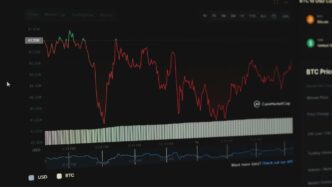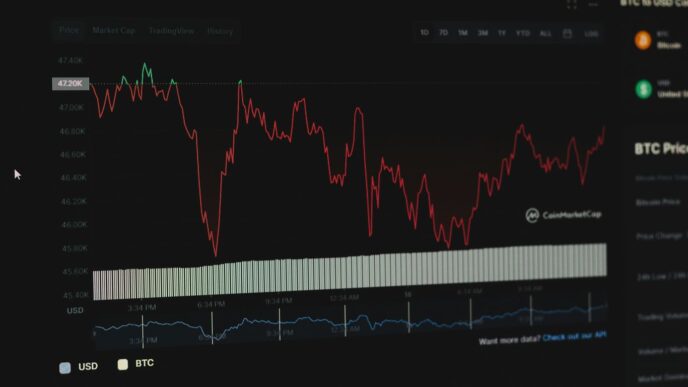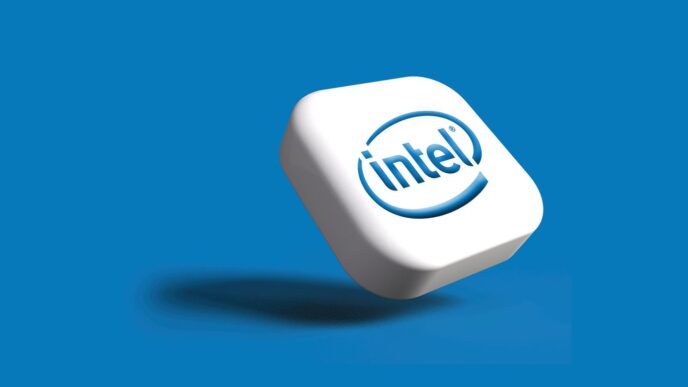The digital commerce landscape is experiencing a fundamental shift as Web3 marketplaces emerge to challenge traditional e-commerce paradigms. Despite the crypto market volatility of 2022 and early 2023, the underlying infrastructure for Web3 payments continues to mature, with industry analysts projecting significant growth as institutional adoption accelerates and regulatory frameworks solidify.
The challenge isn’t merely technical; it’s strategic. While crypto-native users expect the freedom and programmability of on-chain payments, mainstream users still rely on familiar fiat payment methods. The marketplace that can elegantly bridge these two worlds will capture both audiences and position itself for sustained growth in an increasingly diverse financial ecosystem.
The Architecture Imperative: Designing for Dual Rails
Building hybrid payment infrastructure requires a fundamental shift from traditional payment gateway integrations. Rather than bolting crypto payments onto existing fiat systems as an afterthought, successful Web3 marketplaces architect their payment infrastructure as a unified orchestration layer that treats both traditional and crypto payment methods as first-class citizens.
Core Architecture Principles
Payment Abstraction Layer: The foundation of any robust hybrid system is a payment abstraction layer that normalizes different payment methods into consistent internal APIs. This layer should handle the complexity of different settlement times, fee structures, and failure modes while presenting a unified interface to your application logic.
Event-Driven Processing: Unlike traditional payment processors that rely heavily on synchronous request-response patterns, hybrid systems must embrace asynchronous, event-driven architectures. Blockchain transactions have variable confirmation times, and smart contract interactions can fail in ways that require sophisticated retry logic.
State Management Across Rails: Your system must maintain consistent state across both traditional and crypto payment rails. This means implementing robust idempotency mechanisms, transaction state machines, and reconciliation processes that can handle the different finality guarantees of each payment method.
Implementation Patterns: From Theory to Practice
The Orchestration Layer
The heart of your hybrid payment system is the orchestration layer—a service that routes transactions to appropriate payment processors based on business logic, user preferences, and real-time system conditions.
The orchestration layer must evaluate multiple factors when determining payment routing strategies. User preferences serve as the primary input, but the system must also consider transaction amounts, currency types, geographical restrictions, current network gas prices, and foreign exchange rates. This decision matrix becomes particularly complex when dealing with high-value transactions that might benefit from crypto rails to avoid traditional banking fees, or low-value transactions where credit card processing might be more cost-effective despite higher percentage fees.
The routing logic must also account for real-time network conditions. During periods of high Ethereum network congestion, the system might automatically route smaller transactions through traditional payment processors, while larger transactions that can absorb higher gas fees continue through crypto rails. This dynamic routing capability separates sophisticated hybrid systems from simple dual-option implementations.
Smart Contract Integration Patterns
For crypto payments, marketplace smart contracts should implement security-first design patterns that protect both buyers and sellers. The withdrawal pattern ensures that contracts don’t directly send funds to external addresses, instead allowing users to pull their funds, which prevents reentrancy attacks and gas limit issues.
Smart contracts in hybrid marketplaces typically implement escrow mechanisms where funds are held in a secure state until transaction conditions are met. This might involve time-based releases, multi-signature approvals, or integration with dispute resolution systems. The contract architecture must balance security with user experience, ensuring that legitimate transactions flow smoothly while providing protection against fraud and technical failures.
Access controls become particularly important in marketplace contexts where multiple parties interact with the same contract. Role-based permissions ensure that only authorized addresses can execute administrative functions, while automated systems handle routine transaction processing.
Fiat-to-Crypto Bridge Implementation
Modern hybrid systems leverage emerging services to provide seamless fiat-to-crypto conversion. The bridge implementation involves a two-phase transaction process that first captures the fiat payment through traditional rails, then initiates crypto conversion if required by the transaction context.
The conversion process must handle various scenarios including partial conversions, where only a portion of the transaction value moves to crypto rails, and full conversions where the entire transaction amount undergoes currency transformation. The system must also manage the temporal gap between fiat capture and crypto delivery, maintaining transaction state and providing appropriate user feedback throughout the process.
Currency conversion rates and blockchain network fees introduce additional complexity, as these costs must be either absorbed by the platform, passed through to users, or dynamically allocated based on transaction characteristics. Successful implementations often use predictive models to estimate total transaction costs upfront, providing users with clear pricing before transaction initiation.
Error Handling and Resilience Patterns
Hybrid payment systems must gracefully handle the unique failure modes of both traditional and crypto payment rails. Traditional payments might fail due to insufficient funds, expired cards, or banking network issues, while crypto transactions can fail due to gas estimation errors, network congestion, smart contract reverts, or insufficient token balances.
The resilience strategy must differentiate between transient failures that merit retry attempts and permanent failures that require alternative handling. Network congestion on Ethereum might resolve within minutes, making retry logic appropriate, while insufficient account balances require immediate user notification and alternative payment method suggestion.
Exponential backoff strategies work well for blockchain transactions, but the retry timing must account for network-specific characteristics. Bitcoin transactions might require longer retry intervals due to block time constraints, while layer-2 solutions might support more aggressive retry schedules.
The system must also implement comprehensive transaction state tracking that can reconstruct payment flows across multiple systems and blockchains. This becomes critical for customer support scenarios and financial reconciliation processes.
Security Considerations and Best Practices
Security in hybrid payment systems requires defense-in-depth strategies that account for both Web2 and Web3 attack vectors. Traditional payment security focuses on PCI compliance, tokenization, and fraud detection, while crypto payment security emphasizes private key management, smart contract auditing, and transaction signing security.
Multi-signature requirements become particularly important for high-value transactions, where the additional security overhead justifies the increased complexity. The multi-sig strategy might span both hot wallet infrastructure for routine transactions and cold storage systems for administrative functions.
Rate limiting in hybrid systems must consider both traditional request-based metrics and blockchain-specific factors like gas price volatility and network congestion. A sophisticated rate limiting system might allow higher transaction volumes during low-cost blockchain conditions while implementing stricter limits during network stress periods.
Key management represents one of the most critical security considerations. Hardware security modules provide excellent protection for production systems, but the key rotation and recovery procedures must account for blockchain immutability constraints. Unlike traditional systems where compromised credentials can be immediately revoked, blockchain systems require more complex migration strategies.
Performance Optimization Strategies
Gas Price Optimization
Effective gas price optimization requires real-time monitoring of blockchain network conditions and predictive modeling of transaction confirmation times. The system must balance transaction urgency against cost optimization, potentially maintaining multiple urgency levels with corresponding gas price strategies.
The optimization engine should cache gas price data to avoid excessive API calls while ensuring that cached values remain current enough for accurate cost estimation. Network conditions can change rapidly, particularly during high-activity periods, so the cache refresh strategy must adapt to market volatility.
Dynamic gas price adjustment during transaction retry cycles represents another optimization opportunity. If an initial transaction fails due to insufficient gas price, the retry mechanism can incrementally increase the gas price rather than immediately jumping to maximum levels.
Database Architecture for Transaction Tracking
Hybrid payment systems generate high transaction volumes with complex relationships between fiat and crypto payment records. The database architecture must efficiently handle both high write throughput and complex analytical queries used for reconciliation and reporting.
Transaction tables require careful indexing strategies that support common query patterns without overwhelming write performance. Composite indexes on transaction status and creation timestamps support operational dashboards, while separate indexes on blockchain transaction hashes enable efficient reconciliation processes.
The schema design must accommodate the different data models of various payment processors and blockchain networks. Traditional payments might require fields for card types and authorization codes, while crypto transactions need block numbers, gas usage, and confirmation counts.
Real-World Performance Metrics and Benchmarks
Based on early implementations and pilot programs across various Web3 marketplaces, hybrid payment systems are beginning to demonstrate specific performance characteristics that vary significantly based on the underlying infrastructure and optimization strategies employed:
Traditional payment processing through established processors generally completes within 2-5 seconds for standard authorization flows. However, international transactions or additional fraud verification steps can extend processing times to 10-15 seconds.
Crypto payment confirmation times depend heavily on network selection and gas price strategies. Ethereum mainnet transactions with standard gas pricing typically confirm within 1-3 minutes, though network congestion can extend this to 15-30 minutes. Layer-2 solutions like Polygon, which saw significant adoption throughout 2023, offer much faster confirmation times, often under 10 seconds, though they require additional infrastructure complexity.
Hybrid conversion processes, where fiat payments undergo crypto transformation, introduce additional latency. The most efficient implementations achieve 45-90 second total processing times, including both fiat capture and crypto delivery phases.
System availability targets for production hybrid payment systems typically aim for 99.9% uptime across all payment rails. This requires redundant infrastructure, automated failover mechanisms, and comprehensive monitoring systems that can detect and respond to issues across multiple payment networks simultaneously.
Error rate tolerance varies by transaction type and value, but critical payment flows should maintain error rates below 0.1%. This aggressive target necessitates extensive testing, gradual rollout strategies for system changes, and sophisticated retry mechanisms that can handle the unique failure modes of each payment rail.
Future-Proofing Your Infrastructure
As the Web3 payments landscape continues to evolve, hybrid infrastructure must be designed for adaptability rather than optimization for current conditions. The blockchain ecosystem continues to introduce new networks, consensus mechanisms, and scaling solutions that may become important payment rails in the future.
Multi-Chain Architecture: Design principles should accommodate easy integration of new blockchain networks through adapter patterns that abstract network-specific implementations. The system architecture should handle different consensus mechanisms, block times, and transaction fee structures without requiring fundamental redesign.
Regulatory Compliance Hooks: Regulatory requirements for crypto payments are beginning to crystallize across different jurisdictions. The system should include comprehensive logging, reporting capabilities, and configurable compliance rules that can adapt to emerging requirements without major infrastructure changes. This includes transaction monitoring, suspicious activity reporting, and Know Your Customer integration points that align with the regulatory frameworks taking shape in major markets.
AI-Driven Optimization: Machine learning models are beginning to show promise for optimizing multiple aspects of hybrid payment systems, from payment routing decisions to gas price prediction and fraud detection. However, these models must be trained on data from both traditional and crypto payment systems, requiring careful feature engineering that captures the unique characteristics of each payment rail. We expect to see more sophisticated implementations of AI-driven payment optimization.
The optimization models should consider not just individual transaction efficiency but also portfolio-level metrics like overall cost minimization, user experience optimization, and risk management across the entire payment ecosystem.
Economic Implications and Business Models
Hybrid payment infrastructure creates new opportunities for revenue optimization through intelligent fee structures and payment routing strategies. Traditional payment processors typically charge percentage-based fees with minimum thresholds, while crypto transactions involve variable gas fees that depend on network congestion and transaction complexity.
Smart fee structures can optimize total payment costs by routing transactions through the most cost-effective rails based on current conditions. Large transactions might benefit from crypto rails despite higher absolute gas costs due to lower percentage fees, while small transactions might achieve better economics through traditional processors despite higher percentage costs.
The temporal aspects of different payment rails also create arbitrage opportunities. Crypto payments often settle faster than traditional ACH transfers, allowing marketplaces to optimize cash flow by preferentially routing transactions that benefit from faster settlement.
Revenue sharing models with payment processors can also influence routing decisions, creating additional optimization parameters beyond simple cost minimization. The system might prefer certain payment rails during specific periods to optimize revenue sharing arrangements or meet volume commitments with various processors.
Conclusion: Building for the Multi-Modal Future
The future of digital commerce isn’t about choosing between traditional finance and Web3—it’s about creating seamless experiences that give users the freedom to transact however they prefer while giving merchants access to global markets with minimal friction.
Hybrid payment infrastructure represents more than just technical integration; it’s a strategic architectural decision that positions marketplaces to capture value across the entire spectrum of digital commerce evolution. By implementing robust orchestration layers, embracing event-driven architectures, and maintaining security-first development practices, marketplace operators can build payment systems that don’t just support today’s needs but anticipate tomorrow’s opportunities.
The economic advantages of hybrid systems extend beyond simple cost optimization. They enable new business models, improve cash flow characteristics, and provide competitive advantages in user acquisition and retention. Markets that master this hybrid approach today will define the commerce standards of tomorrow, creating competitive moats that compound as both traditional finance and Web3 ecosystems continue to mature and converge.
Success in hybrid payment infrastructure requires balancing multiple competing priorities: cost optimization versus user experience, security versus convenience, innovation versus stability. The organizations that navigate these trade-offs most effectively will capture disproportionate value as digital commerce continues its evolution toward multi-modal payment experiences.













